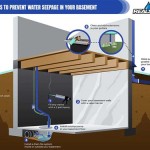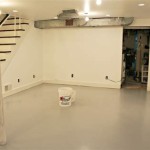Essential Aspects of Replacing Cast Iron Sewer Pipe in Basement
Cast iron sewer pipes were prevalent in older homes, but their durability has limits. Over time, these pipes can corrode, crack, and leak, leading to severe plumbing issues. Replacing these pipes is a crucial maintenance task that requires careful planning and professional expertise. Here are the essential aspects to consider when replacing cast iron sewer pipe in your basement:
1. Inspection and Assessment: Before replacing the pipes, a thorough inspection is necessary to determine the extent of damage and the most suitable replacement materials. A plumbing professional can examine the pipes using a camera or other tools to identify any cracks, blockages, or corrosion.
2. Material Selection: Depending on the specific situation, various materials can be used to replace cast iron pipes. Common options include PVC (polyvinyl chloride), ABS (acrylonitrile butadiene styrene), and ductile iron. Each material has its advantages and drawbacks in terms of cost, durability, and ease of installation.
3. Access and Excavation: Replacing sewer pipes often involves accessing them from the basement or crawlspace. This may require some excavation to expose the pipes and create space for the new ones. The extent of excavation depends on the location and condition of the existing pipes.
4. Pipe Removal and Installation: Once the old pipes are exposed, they need to be carefully removed. This is a delicate process as cast iron pipes are heavy and brittle. The new pipes are then installed according to the design and material specifications. Proper connections and seals are essential to prevent leaks and ensure a secure installation.
5. Backfilling and Finishing: After the new pipes are installed, the excavated areas are backfilled with soil or other materials. The backfill should be compacted to provide a stable base for the pipes and prevent settling. If necessary, the basement or crawlspace may require additional finishing touches to restore it to its original condition.
6. Testing and Inspection: Once the replacement is complete, thorough testing and inspection are crucial to ensure the proper functioning of the new pipes. The plumbing system is pressurized and tested for leaks or other issues. A final inspection is also conducted to verify the overall quality of the installation.
7. Permits and Codes: Replacing sewer pipes is a significant plumbing project that may require permits from local authorities. It is essential to familiarize yourself with the building codes and regulations applicable in your area to ensure compliance and prevent any potential complications.
8. Professional Expertise: Replacing cast iron sewer pipes in the basement is a task best left to licensed and experienced plumbers. These professionals have the necessary knowledge, tools, and safety protocols to handle the job effectively and minimize disruptions to your home.
Remember, replacing cast iron sewer pipe in the basement is an important investment in the longevity and health of your plumbing system. By carefully considering the above aspects and seeking professional assistance, you can ensure a successful and lasting replacement that will minimize plumbing issues and contribute to the overall comfort of your home.

How To Make A Cast Iron Stack Repair In 4 Steps

Basement Sewer Line Repair Service
Replacing Cast Iron Pipes What You Need To Know

Cast Iron Drain Pipe Repair When Should You Call The Pros

Replacing Iron Pipes With Pvc Bob Smith Plumbing Methods
Cast Iron Sewer Pipes Just Started Leaking In Basement Diy Home Improvement Forum

Basement Sewer Line Repair Service

How To Cut Cast Iron Pipe And Replace It With Pvc At Improvements

Replace Cast Iron P Trap Or Just Add Cleanout Doityourself Com Community Forums

Cast Iron Pipe Class Action Lawsuit Vip Adjusting








